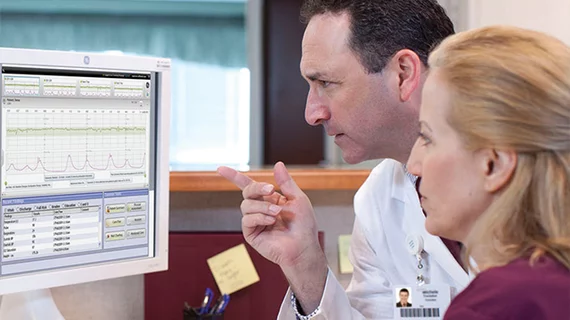The evolution of the EMR: Radiologists reveal how they’d react to a new system
Radiology leaders responded this week to a difficult hypothetical—something the Journal of the American College of Radiology itself called a “devilish dilemma”: What would they do if their hospitals insisted on permanently switching to a new electronic medical record (EMR) without first consulting them?
In the current edition of JACR, four radiologists were asked how they’d handle an unsuccessful transition from their standard EMR to a new platform. The move was hypothetically initiated by hospital administrators, who refused to revert to their old systems despite serious adverse outcomes like scheduling mix-ups, increased radiologist workload and loss of referrals.
None of the radiologists was too pleased with the idea—Carolyn C. Meltzer, MD, of Emory University in Atlanta, said radiology leaders should have been involved in the transition from the beginning. If an interdisciplinary team of hospital leaders were to work together to shape a new EMR, she said, there’s a good chance they’d be able to avoid most of the issues cited in JACR’s scenario.
“The hospital cannot function properly unless radiologists and radiology informatics specialists are integrated with the health system’s IT team,” she wrote. “Changing [EMR] platforms without sufficiently considering the impact on radiology will require a major commitment of time and effort to retrospectively address broken processes and technical barriers to radiology workflow integration.”
She said transparency is key, as is wide-reaching communication for all stakeholders involved.
David M. Yousem, MD, MBA, took a different approach to alleviating the problem. Yousem, of Johns Hopkins School of Medicine in Baltimore, Maryland, suggested taking departmental concerns directly to hospital administration with a numbers-based report.
“If this EMR is truly an albatross that is wasting time, effort and money, I would embark on a ‘research project’ documenting the cost in physician hours, lost referrals, patient dissatisfaction, administrative overtime and so on to demonstrate its negative impact,” he said.
Yousem, like his co-author Thomas M. Grist, MD, of the University of Wisconsin, said he believed administrators would be more driven toward change if they were presented with visual data. And, he said, in addition to those facts and figures he’d include ideas for ameliorating the new platform and correcting its flaws.
“I do not believe in complaining without having an acceptable alternative that has been researched,” Yousem wrote. “In the end, if the executive leadership of the hospital insists on remaining with the ‘flawed’ EMR, I would work within the system to improve it and make lemonade from lemons.”
Though some radiologists were more passionate about their hypothetical actions—“I would never accept being forced to adopt something as impactful to our clinical care as a disastrous EMR platform,” Grist wrote—all seemed to be in agreement about one thing: if this situation were real, they’d all be willing to work to shape the platform into something that suited their staffs’ and patients’ needs.
“It seems that radiologists were surprised by and unprepared for the EMR implementation and were not involved in the EMR selection process,” Cindy Sherry, MD, who works for the radiology department at Texas Health Presbyterian Dallas, said of the hypothetical. “Otherwise, they would have had advanced opportunity to predict or circumvent problems and a head start at weighing options for an interface or work-around, potentially avoiding some or all of the issues. This scenario exemplifies benefits of radiologist involvement in hospital administration.”

